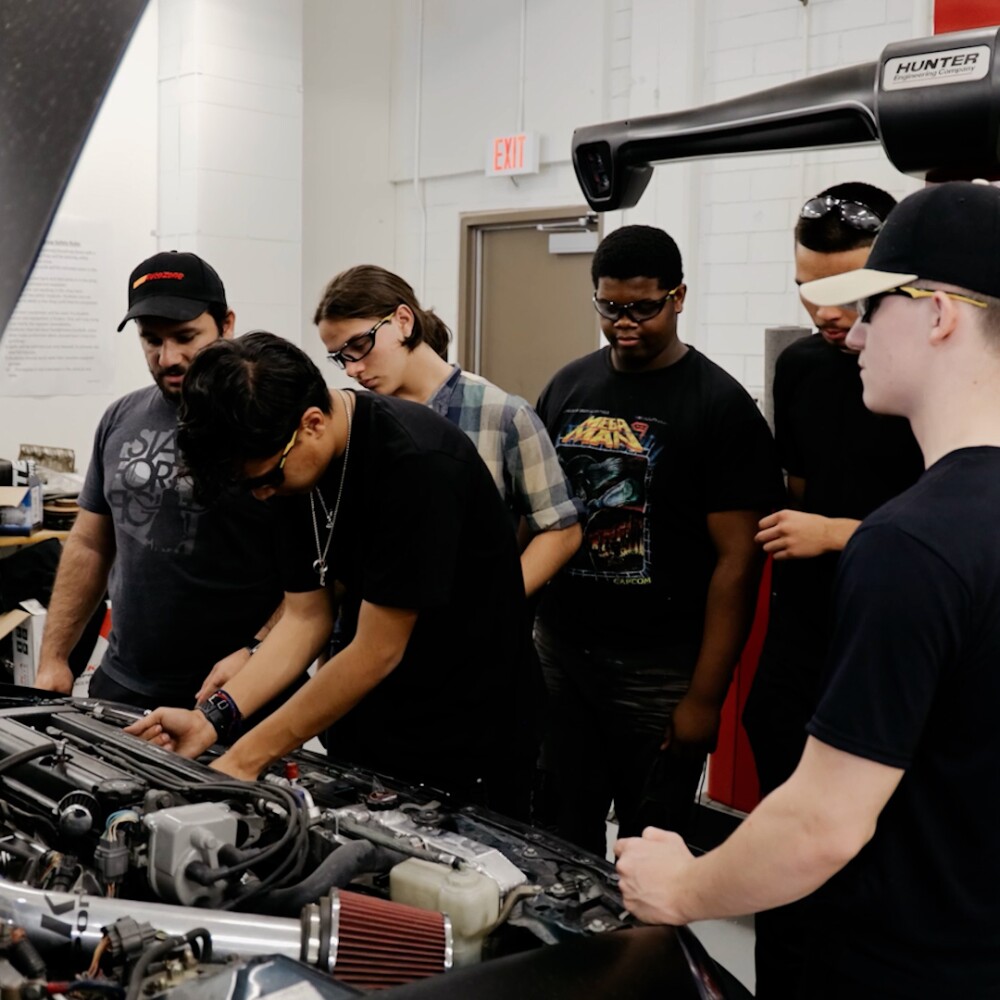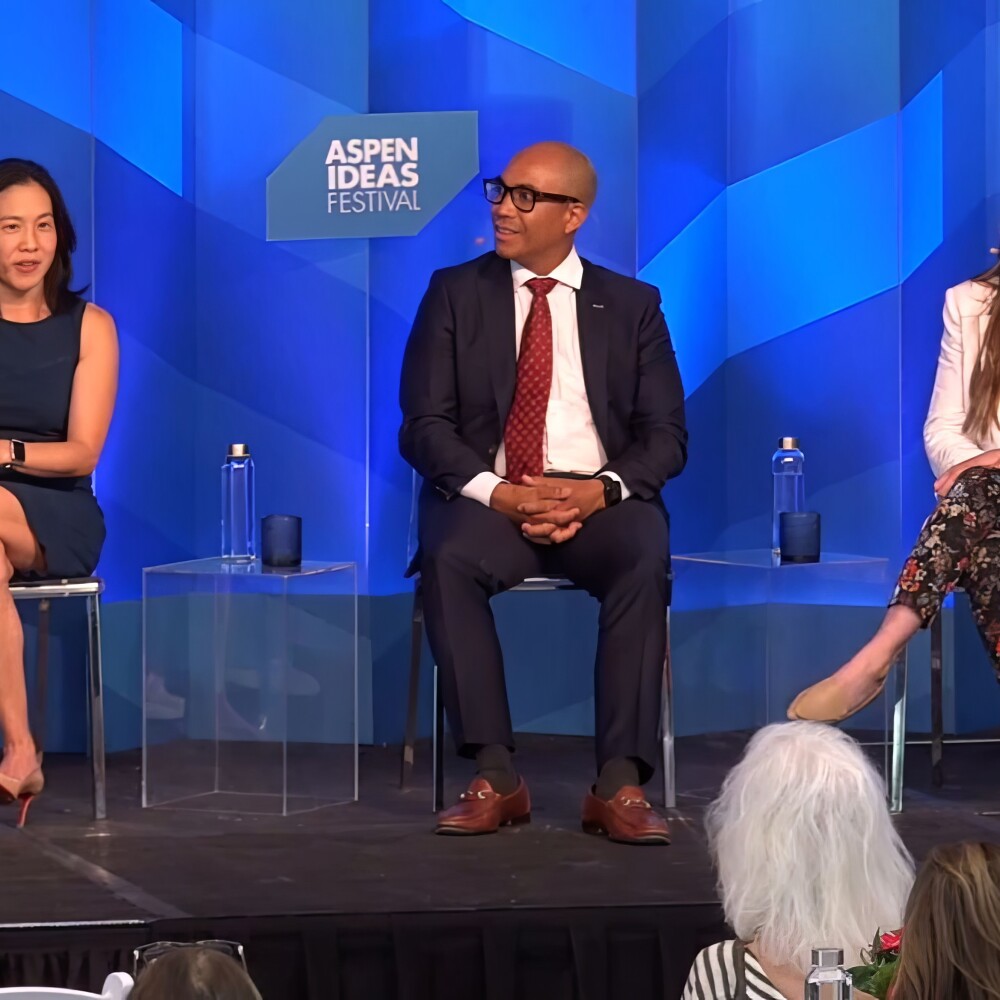Just a subway ride away from the nation’s second-largest tech hub, Comp Sci.High Principal Iris Adler is preparing her students with the personal and professional skills to succeed in the high-tech jobs of the future.
The school views itself as “an engine of opportunity and a force for economic freedom in the South Bronx,” exposing its diverse student body to industry professionals and real-world work experience.
At the beginning of last year, members of Comp Sci’s board brought in several of these experts from Google and other top tech companies. The idea? To discuss AI as a tool for education and how teachers can leverage it to their advantage.
“I can count on my hand how many teachers showed up,” laments Iris of the professional development session. What should have been an “amazing” opportunity was instead met with avoidance. “Avoid all you want,” she recalls telling her team. “But [AI] is happening.”
A rapidly evolving technology, AI is striking equal parts excitement and apprehension in many educators.
Today, 79% of teachers are familiar with ChatGPT. That’s up from 25% just one year ago. Teachers are using AI to support lesson planning, prepare instructional materials and aid in creative work and new ideas for their classes.
There is also a significant increase in awareness and usage at the parent and student levels. Around half now report they use AI chat bots once a week or more, according to a new Impact Research survey conducted for the Walton Family Foundation.
While AI has transformative potential to solve some of education’s most sticky challenges, familiarity hasn’t necessarily led to adoption in the classroom.
At Comp Sci High, Iris says teachers are cautious.
“They are seeing flash articles in the media about it being bad for kids and how it's going to replace teachers.”
The same hesitance goes for her students. They “don't see it as a learning tool,” Iris says. “They see it as, ‘I'm going to get these answers and I'm going to submit this and that's it. Two weeks ago, I had to tell two seniors in particular, ‘You can't graduate because your final project is 100% ChatGPT generated.’”
Understanding how to better use this tool to enhance and personalize instruction, and breaking down longstanding barriers to an equitable education, was a major topic at a recent education forum in New Orleans. The “Lifting Up Black Voices: Inspiring Bold Solutions” forum was hosted by the Walton Family Foundation.
Iris was one of several visionary leaders in education to participate in a conversation moderated by tech journalist Khari Johnson.
Jornea Armant, former pincipal head of engagement at Microsoft Flip, was another.
Her team at Microsoft was tasked with equipping educators with the knowledge and skills to utilize AI effectively.
She says that the arc of AI adoption is following a familiar curve to other game-changing technologies, like calculators and cell phones, that have come before it. Attitudes shifted from fear to experimentation to eventual adoption within healthy parameters.
“I think this is one of the eras where students and teachers are learning the same things at the same time, and it's a beautiful thing.”
Eventually, Jornea says, AI has the potential to become a great equalizer in education. “We all have learning barriers. Some students are afforded with access or resources to overcome them. But others aren’t. I really see AI as a starting point to begin to remove some of those barriers.”
When used appropriately, AI has the potential to be a tutor, a translator or a virtual assistant for students and teachers. AI chatbots can also modify information to certain grades, reading levels and conversation styles.
Offering herself as another example, Jornea says, “How I use AI might be different than how someone else uses AI. My strength is creativity. My downfall is organization, so I'm going to leverage that tool to help me where I have those deficits so that I can truly shine and bring my strengths to the forefront.”
Perpetual Balfour, research director at The Learning Agency, says the key to creating AI that works for education is to “deepen human connections, not replace them.”
She wants “students to see AI as a thought partner … to have the comfort level and the freedom to engage with AI as someone I can reason with, someone I can ask questions of, rather than merely seeking answers.”
A big part of Perpetual’s work is to improve data collection, the critical input on which all AI systems are built. She says that one of the biggest challenges is training AI with educational data, which currently isn’t nuanced enough to make accurate predictions.
“Often, we're amassing data that overrepresents a particular population, let’s say white middle-class students or students who aren't English language learners. And so the AI is making decisions based on data that might not actually reflect the larger school population.”
The key, she says, is to make sure AI is collecting data that represents students from diverse geographic, cultural, ethnic, neurodivergent and linguistic backgrounds, “so that the AI is not just learning how to support one kind of student, it's learning how to support all students.”
Back at Comp Sci High, Iris says that rather than fearing AI, her team should fear what might happen if students and teachers aren’t able to adapt. “We're going to set our kids back if we don't jump in now. The people who are using AI and leveraging it are going to take all of the jobs and all of the opportunities away from my Black and Brown babies, whose teachers are so afraid of it.”
As a school leader, Iris says it’s on her to push both teachers and students towards the future. She’s making AI training a priority at her school during this school year. “We're not going to try to do it on a huge scale. But we're going to start with literacy and showing our teachers, kids and families how to use it.”
The dream, Iris says, is to empower her school community to wield AI confidently and appropriately. “I’m not worried about AI replacing teachers in the classroom. It's a supplement. If you utilize ChatGPT the right way, you put in the right prompts, you'll be able to get a dialogue that helps you elevate what you've already learned and practiced.”
Her only regret? “We should have started sooner. [Adults] aren’t going to be here for long, and who will help fix and guide the world?” The answer, she believes, are her Bronx students, empowered with every tool available to lead successful, tech-enabled lives.




